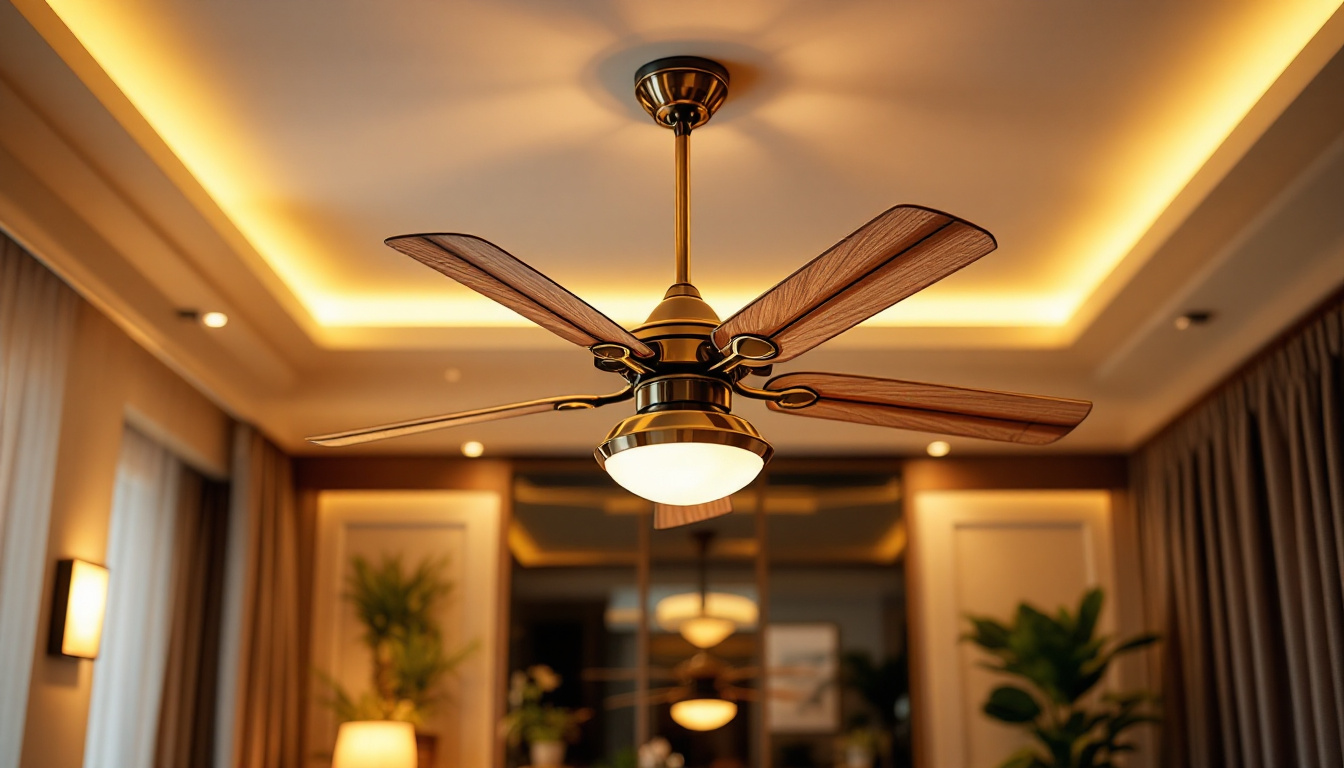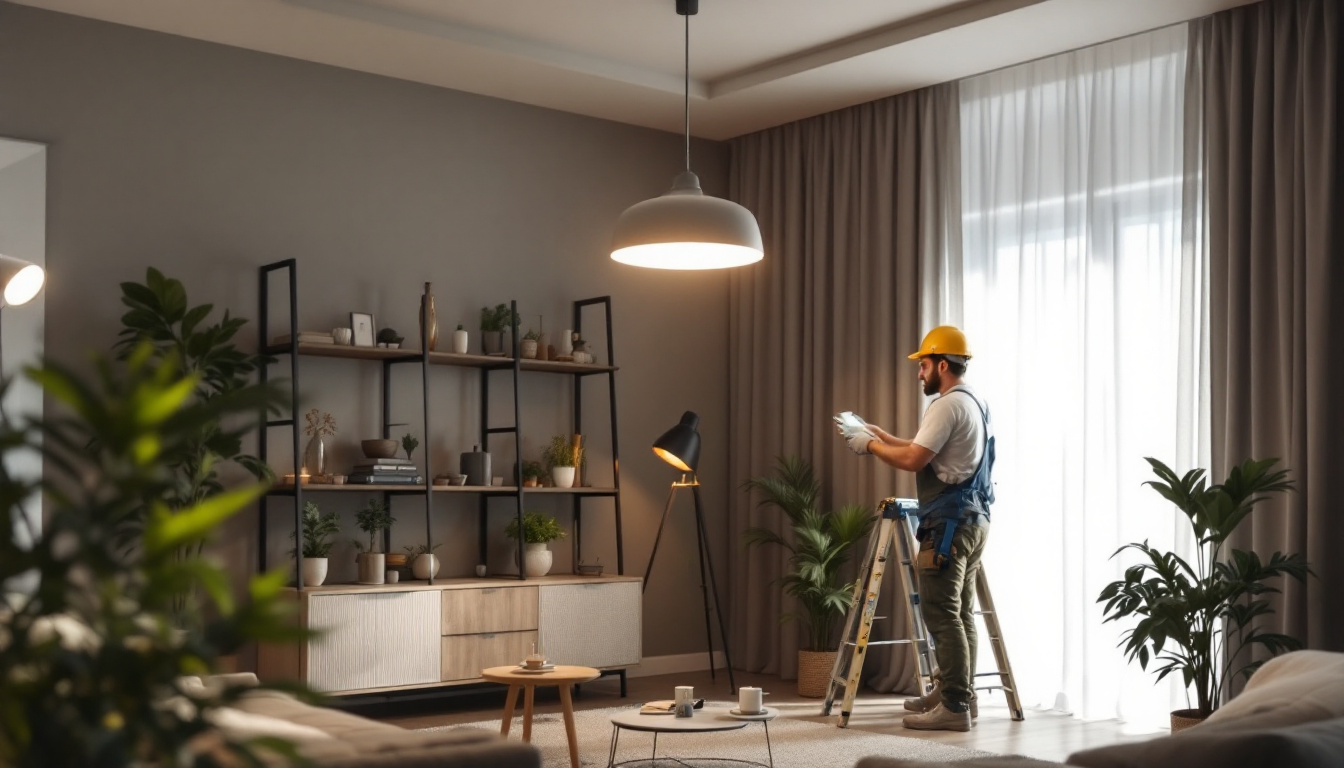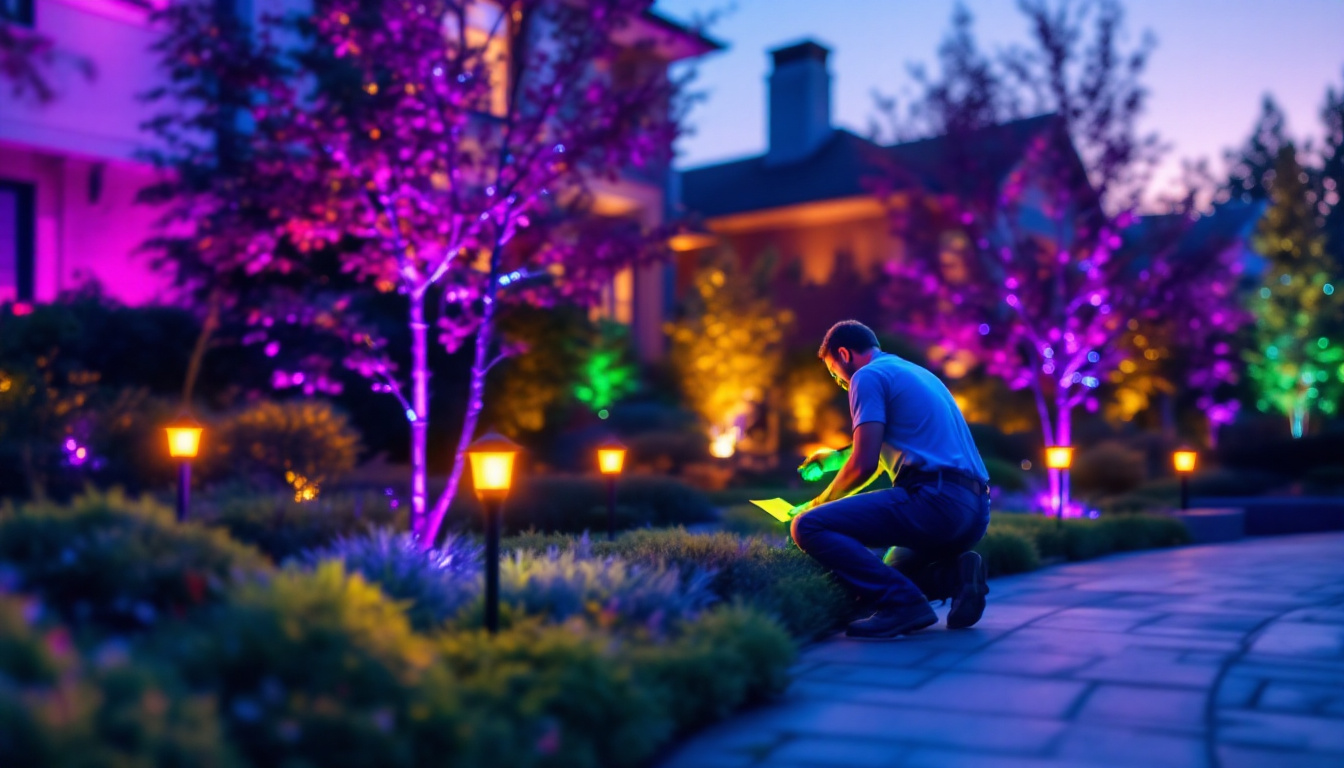
ceiling fans are often perceived as mere functional elements in a space, primarily designed to provide airflow. However, they play a crucial role in the overall lighting design of a room. For lighting contractors, recognizing the aesthetic and practical contributions of ceiling fans can elevate their projects significantly.
While many focus on traditional lighting fixtures, the integration of ceiling fans can enhance the ambiance and functionality of a space. The right ceiling fan not only complements the existing lighting but can also contribute to energy efficiency and comfort.
Modern ceiling fans come in a variety of styles, materials, and finishes, allowing them to blend seamlessly with diverse interior designs. From sleek, minimalist models to ornate, vintage-inspired options, the selection is vast. Lighting contractors should consider how these fans can serve as statement pieces that enhance the overall aesthetic of a room.
Incorporating a ceiling fan that aligns with the room’s decor can create a cohesive look. For instance, a rustic wooden fan can complement a farmhouse-style kitchen, while a contemporary metal fan can enhance a modern living room. The visual impact of a well-chosen ceiling fan can elevate the perception of the space. Furthermore, many fans now come with customizable features, such as interchangeable blades or light kits, allowing homeowners to modify their fans to suit seasonal decor changes or personal tastes, making them even more versatile in design.
Beyond their primary function of air circulation, ceiling fans can significantly impact lighting quality and energy efficiency. Many ceiling fans come equipped with integrated lighting options, which can provide ambient light while also serving as a focal point in the room. This dual functionality can be particularly advantageous in spaces where traditional lighting fixtures may be limited.
Additionally, ceiling fans can help distribute light more evenly throughout a room. The gentle movement of air can prevent hot spots and ensure that light is diffused across the space, creating a more inviting atmosphere. This is especially important in larger rooms where lighting can often be uneven. Moreover, with advancements in technology, many ceiling fans now feature smart capabilities, allowing users to control both the fan speed and lighting through mobile apps or voice commands. This integration not only enhances convenience but also allows for personalized lighting settings that can adapt to different activities, whether it’s a cozy movie night or an energetic gathering with friends.
When selecting a ceiling fan, lighting contractors must consider the specific needs of each space. Factors such as room size, ceiling height, and overall design theme play a vital role in making the right choice.
Understanding these elements can help contractors recommend the most suitable ceiling fans to their clients, ensuring that both functionality and aesthetics are addressed. Here are some key considerations to keep in mind.
The size of the room directly influences the size of the ceiling fan. A fan that is too small will struggle to provide adequate airflow, while one that is too large can overwhelm the space. Generally, a fan’s diameter should be proportional to the room size; for example, a 52-inch fan is ideal for rooms up to 400 square feet.
Contractors should also consider the fan’s height. In rooms with low ceilings, flush-mount fans are ideal, while taller ceilings may benefit from fans with downrods that can hang lower, optimizing airflow and lighting distribution. Additionally, the number of blades on the fan can affect both its performance and style. Fans with more blades may operate more quietly and provide a softer breeze, making them suitable for bedrooms or quiet spaces.
Ceiling height is another critical factor in selecting a ceiling fan. For standard ceilings (8 to 9 feet), a fan with a standard mount is typically appropriate. However, for ceilings higher than 9 feet, a downrod may be necessary to ensure optimal airflow and lighting effectiveness.
Moreover, in spaces with sloped ceilings, specialized mounts can help maintain the fan’s position for maximum efficiency. Lighting contractors should educate clients on these options to ensure they are satisfied with their ceiling fan’s performance and appearance. It’s also worth noting that the style of the fan can complement the architecture of the room; for instance, a rustic wooden fan can enhance a farmhouse aesthetic, while a sleek, modern fan can elevate a contemporary space. Understanding the interplay between design and functionality allows contractors to provide tailored recommendations that meet the unique needs of each client.
One of the often-overlooked aspects of ceiling fans is their potential to integrate lighting features. Many modern ceiling fans come with built-in lighting options, which can enhance the functionality of the fan while providing additional illumination to the space. This dual functionality not only saves room and reduces clutter but also allows for a more cohesive design in any room, blending the fan and light seamlessly into the overall aesthetic.
When recommending ceiling fans, contractors should discuss the various lighting options available, such as LED bulbs, dimmable features, and color temperature choices. These elements can significantly influence the overall atmosphere of a room. For instance, warmer color temperatures can create a cozy and inviting environment, perfect for living rooms or bedrooms, while cooler temperatures can invigorate spaces like kitchens or home offices, enhancing focus and productivity.
Ceiling fans with integrated lighting typically offer several types of light sources, including uplighting, downlighting, and even color-changing options. Uplighting can create a soft glow that enhances the ambiance, while downlighting provides focused illumination for tasks. Some fans even feature adjustable lighting angles, allowing users to direct light where it is needed most, whether for reading, cooking, or entertaining.
Additionally, some ceiling fans come with smart technology that allows users to control the lighting and fan speed through mobile apps or voice commands. This integration can provide convenience and enhance the user experience, making it an attractive selling point for lighting contractors. Imagine being able to set the mood for a dinner party with a simple voice command or adjusting the brightness of your fan’s lights from the comfort of your couch—these features not only add luxury but also practicality to everyday living.
In today’s environmentally conscious market, energy efficiency is a significant consideration for both contractors and clients. Ceiling fans can contribute to energy savings by reducing the need for air conditioning in warmer months and providing warmth in the winter when used in reverse mode. This versatility makes them a year-round solution for climate control, appealing to homeowners looking to lower their energy bills.
Many modern ceiling fans are designed with energy-efficient motors and LED lighting, which consume less electricity and have longer lifespans than traditional options. By promoting these features, contractors can position themselves as knowledgeable professionals who prioritize sustainability in their projects. Furthermore, some manufacturers are now incorporating recycled materials into their fan designs, further appealing to eco-conscious consumers who value products that are not only functional but also environmentally responsible. This commitment to sustainability can foster long-term relationships with clients who appreciate a contractor’s dedication to both quality and the planet.
While integrating ceiling fans into lighting designs can offer numerous benefits, there are common pitfalls that lighting contractors should avoid. Recognizing these mistakes can lead to more successful projects and satisfied clients.
One of the most significant oversights is failing to consider the stylistic compatibility of ceiling fans with the overall design of the space. A ceiling fan that clashes with the room’s decor can detract from the aesthetic appeal and create a disjointed look.
Contractors should take the time to understand their clients’ design preferences and recommend ceiling fans that align with their vision. This attention to detail can enhance the overall project outcome and client satisfaction.
Another common mistake is neglecting the specific installation requirements of ceiling fans. Each fan may have unique mounting and wiring needs that must be addressed during installation. Failing to account for these requirements can lead to delays and additional costs.
Contractors should familiarize themselves with the installation guidelines for each fan model and ensure that they are prepared to meet these requirements. This proactive approach can streamline the installation process and enhance the overall client experience.
Effective communication with clients is essential for lighting contractors. Providing education about the benefits of ceiling fans, their integration with lighting, and maintenance can empower clients to make informed decisions.
Contractors should take the time to explain the various options available, including different styles, lighting features, and energy efficiency ratings. This transparency can foster trust and lead to stronger client relationships.
Maintenance is a crucial aspect of ensuring the longevity and performance of ceiling fans. Contractors should educate clients on how to care for their fans, including regular cleaning and checking for loose screws or connections.
Additionally, discussing the importance of replacing light bulbs and ensuring that the fan blades are free of dust can help clients maintain the efficiency and appearance of their ceiling fans. This knowledge can enhance the overall satisfaction with the product.
As the demand for stylish and functional home design continues to grow, ceiling fans are becoming an increasingly important element in lighting design. For lighting contractors, recognizing the potential of ceiling fans can lead to enhanced project outcomes and satisfied clients.
By understanding the aesthetic and functional benefits of ceiling fans, choosing the right models for different spaces, and effectively communicating with clients, contractors can elevate their services and stand out in a competitive market. The future of ceiling fans in lighting design is bright, and those who embrace this trend will undoubtedly reap the rewards.
Ready to enhance your lighting designs with the elegance and functionality of ceiling fans? At LumenWholesale, we provide lighting contractors with an exceptional range of high-quality, spec-grade ceiling fans and lighting products at unbeatable wholesale prices. Say goodbye to local distributor markups and hello to superior products that meet the highest industry standards. With our hassle-free bulk buying and free shipping, you can equip your projects with premium lighting at the best value — all without hidden fees or compromises. Elevate your service offerings and delight your clients by choosing Wholesale Lighting at the Best Value with LumenWholesale.

Discover budget-friendly lighting solutions with expert tips tailored for lighting contractors.

Discover how choosing the right pendant dining room light can elevate your design portfolio and secure more lighting contracts.

Discover the common pitfalls lighting contractors face with color-changing landscape lights and learn how to avoid them.

Discover the essential guide for lighting contractors on ceiling lighting bars.